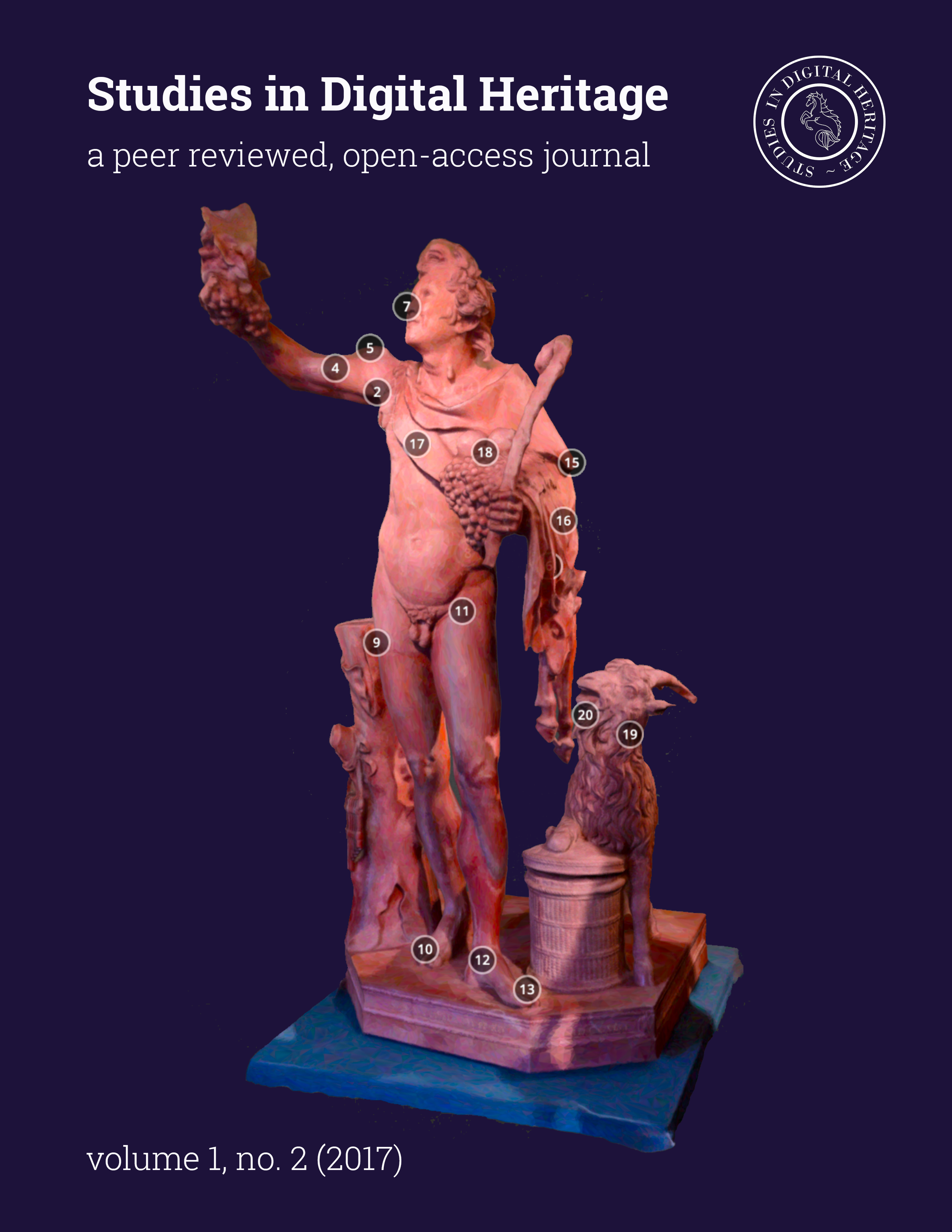Data Curation: How and Why. A Showcase with Re-use Scenarios.
Main Article Content
Abstract
IANUS is funded by the German Research Foundation (DFG) with the objective to build up a digital archive for archaeology and ancient studies in Germany. A first three year phase of conceptual work is now being followed by a second, in which the concepts get implemented and the data centre begins its operational work.
Data curation is essential for preservation of digital data and helps to detect errors, aggregate documentation, ensure the reusability of data and in some cases even add further functionality and additional files. This paper will present the workflow of data curation based on a data collection about European vertebrate fauna and will exemplify the different data processing stages at IANUS according to the OAIS model – from its initial submission until its final presentation on the recently established data portal. One aspect of this will be the discussion of the archival information package. To enable and ease the reusability of research data, it is useful to enrich the data. This includes the GIS integration of geographic informations and reutilisation of bibliography.
Finally a re-use scenario of research data stored in the IANUS repository will be presented that offers researchers a unified search and discovery facilities over several distributed and heterogeneous datasets by using Semantic Web technologies.Downloads
Article Details
From 18 May 2018, the contents of Studies in Digital Heritage are licensed under a Creative Commons Attribution-NonCommercial 4.0 International License (CC BY-NC 4.0). Our submitting authors pay no fee and retain the copyright to their own work.
How this works: to submit their work to the journal, authors grant Studies in Digital Heritage a nonexclusive license to distribute the work according to a CC BY-NC 4.0 license. Once an article is published, anyone is free to share and adapt its contents—provided only that they do so for noncommercial purposes and properly attribute the shared or adapted information. Details of these terms can be found on the Creative Commons website.
Download SDH’s full author agreement here
Studies in Digital Heritage will insert the following note at the end of any work published in the journal:
© [Year] by the authors. This article is an open-access article distributed under the terms and conditions of the Creative Commons Attribution License CC BY-NC 4.0 (https://creativecommons.org/licenses/by-nc/4.0/).
References
ARIADNE – Advanced Research Infrastructure for Archaeological Dataset Networking in Europe. 2016. Building a Research Infrastructure for Digital Archaeology in Europe.
ARIADNE Booklet, December 2016. Retrieved March 18, 2017 from http://www.ariadne-infrastructure.eu/About N. Benecke. 1999. The Project “The Holocene History of the European Vertebrate Fauna.” In N. Benecke, ed. 1999. The Holocene History of the European Vertebrate Fauna. Archäologie in Eurasien 6, Rahden/Westfalen: Marie Leidorf Verlag, 151-161.
N. Benecke et al. 2016. Holozängeschichte der Tierwelt Europas [data-set], Berlin: IANUS. DOI:http://dx.doi.org/10.13149/001.mcus7z-2.
Bone Commons, http://alexandriaarchive.org/bonecommons/
CCSDS - Consultative Committee for Space Data Systems. 2012. Reference Model for an Open Archival Information System (OAIS). Recommended Practice CCSDS 650.0-M-2. Magenta Book, Washington, DC: CCSDS Secretariat. Retrieved March 18, 2017 from https://public.ccsds.org/pubs/650x0m2.pdf
J. J. Crees et al. 2016. Millennial-scale Faunal Record Reveals Differential Resilience of European Large Mammals to Human Impacts across the Holocene. Proceedings of the Royal Society B, 283: 20152152. DOI:http://dx.doi.org/10.1098/rspb.2015.2152.
E. Hambleton. 2008. Review of Middle Bronze Age - Late Iron Age Faunal Assemblages from Southern Britain. Research Department Report Series number 71-2008. English Heritage.
E. Hambleton. 2009. A Review of Animal Bone Evidence from Southern England [data-set]. York: Archaeology Data Service [distributor]. DOI:http://dx.doi.org/10.5284/1000102.
IANUS, ed. 2016. IT-Empfehlungen für den nachhaltigen Umgang mit digitalen Daten in den Altertumswissenschaften [Version 1.0]. DOI:http://dx.doi.org/10.13149/000.y47clt-t.
S. W. Kansa and F. Deblauwe. 2011. User-Generated Content in Zooarchaeology - Exploring the “Middle Space” of Scholarly Communication. In E. Kansa et al., eds.. Archaeology 2.0 - New Approaches to Communication and Collaboration. Los Angeles: Cotson Institute of Archaeology Press, 185-206.
G. Linoff. 2015. Data Analysis Using SQL and Excel. New York: Wiley.
F. Schäfer et al. 2015. Forschungsrohdaten für die Altertumswissenschaften – eine kurze Bilanz der aktuellen Situation von Open Data in Deutschland. Archäologische Informationen, 38 (2015), 125136. DOI:http://dx.doi.org/10.11588/ai.2015.1.26156.
R. S. Sommer et al. 2014. Range Dynamics of the Reindeer in Europe during the Last 25,000 years. Journal of Biogeography 41 (2014), 298-306. DOI:http://dx.doi.org/doi:10.1111/jbi.12193.
M. Trognitz. 2013. Abschlussbericht Testbed “Persistent Identifiers.” Retrieved January 20, 2017 from http://www.ianus-fdz.de/projects/ergebnisse/wiki
ZOOARCH, email discussion list, https://www.jiscmail.ac.uk/cgi-bin/webadmin?A0=ZOOARCH


